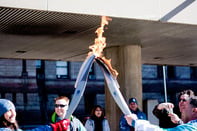Published on
MAY PANEL | Adult Students Persist Better In The New, Radically Innovative Non-Traditional Colleges

Adults are pursuing an undergraduate college education in increasingly higher numbers. A few adults going to night schools in a few colleges that offered such classes was acceptable a few years ago. Today—to meet the needs a much larger population of adult learners—a new, radically innovative model is needed as a complement to the existing traditional collegiate experience currently offered by traditional schools.
These non-traditional colleges have pioneered and embraced the needed elements that now add up to a serious radical alternative to the traditional model and have become a boon to adult college students. These institutions have the elements that adult college students need to persist to graduation.
Einstein said “No problem can be solved from the same level of consciousness that created it”. Mark Twain said: “If you do what you’ve always done, you’ll get what you always got”. The non-traditional college model is a different way and points to a future of higher education that is much friendlier to the adult college student.
One way to define a traditional college is the way the Complete College America organization does it in their Time Is The Enemy brief: institutions offering Bachelor’s degrees on a two-semester per year, four-years-to-graduate academic model. Delivery of education is carried out in the traditional classroom-based, mostly didactic, pedagogical approach with little or no use of technology and where a credit-hour is defined as time spent entirely in the classroom. In these institutions the faculty tenure model is used for promotion with priority placed on scholarship and research over teaching proficiency. The majority of the students live on campus And the majority of the student population are first-time-full-time college students right out of high school. Admissions is selective and most schools compete for the best students to build prestige. For the most part, financing for college is underwritten by the student’s parents, or with sports and/or merit scholarships.
The non-traditional college experience is characterized by what the traditional experience is not: delivery of education is carried out in multiple venues; the classroom, on-line and a combination of the two as blended learning. It uses some didactic elements but it is mostly cooperative, it is androgogical or based on the adult learner and it makes greater use of technology. What’s more, a credit hour is defined as more than time spent in the classroom, it makes allowance for socializing educational interactions electronically.
In non-traditional institutions, the faculty promotion model is based on teaching excellence and service with priority on teaching proficiency. The majority of students live off campus and have very busy off-campus lives. Many are part-time college students returning to school as adults. Admissions is inclusive and based on placement exams, which are not intended to exclude students but to ascertain preparedness to do college work or how much development work they need to get started. For the most part college is self-financed through personal loans and some government grants.
The non-traditional model is ideally suited for the adult college students. Some of the elements of the non-traditional model that allow adults to persist are:
Colleges for the other 75% of college students Traditional colleges are organized to offer a college education to recent high school graduates headed for college right after graduation, attending a residential college full time and funded by their parents. The organization Graduate College America estimates that they represents only 25% of students attending college. The new non-traditional model with its many funding models, its many physical locations to make it convenient to attend college while carrying on a busy life, with day and evening classes and year-round school which support the many students who have disparate needs and can’t fit into the residential full time model. This non-traditional model is friendlier to adults going to college.
Schooling is year-round In America most traditional colleges offer two semesters per year (fall and spring) and expect students to go home for the summer. They offer few classes during the summer thus forcing students to go get a summer job or party their summer away. The consequence is that students take longer to graduate that is necessary. The new model calls for year-round school with three equal semesters spanning all 12 months, which fits the needs of adult students very well and helps them make persist to graduation.
Three-year bachelor’s degree commonplace Traditional colleges assume that most students will take four years to graduate. Their curriculum is based on this assumption. It even classifies students into four groups: freshmen, sophomores, juniors and seniors. In the non-traditional colleges the consequence of year-round schooling is that the students can complete a 120-credit bachelor’s degree in as little as three years. Thus, as a consequence of their obtaining their credentials one year ahead of their peers in conventional colleges, the non-traditional student enjoys a whole extra year of salary in a higher paying job. This is an appealing proposition for adults who understand the economics of the work place far better than their younger academic peers. Also, since they have jobs that are year-round, why not schooling?
A career focus Traditional colleges emphasize character building, the liberal arts and an educational philosophy that indirectly educates students to fill work positions upon graduation. The alternative non-traditional model, by catering to many economically disadvantaged students who must be job-ready upon graduation, puts a premium on career focus and makes a virtue of students receiving proper preparation to enter the workforce ready to contribute upon graduation. For adults, who want applicability of the lesson material, this practicality is very much welcomed.
Faculty are focused on teaching The 500-year old model of the university requires that faculty be scholars pursuing the creation of new knowledge and the imparting it to the students who arrive at their door to be educated. Thus in traditional colleges research and scholarship come first, as the norm in the rewards of the tenure system. Teaching in traditional colleges is secondary. The alternative-model college puts the teaching students first. It requires scholarship in its faculty but as preparation to teach and does not place an undue emphasis. In many instances professional work experience in the subjects being taught is highly valued in contrast to the traditional colleges. Adult college students respond well to faculty sensitive to their needs and temperament.
The multitudes are embraced The traditional colleges are selective. They use selectivity for reputation building, to attract candidates who can afford the higher tuition rates, to improve graduation rates by only accepting the most likely candidates to succeed in their programs of study without extra effort by the college. The non-traditional model embraces all types of students and works hard to help each student succeed. Adults coming back to school need special assistance and may need developmental courses more than students right out of high school.
These are the most salient features of the non-traditional educational opportunities, but there are many more. That is not to say that some traditional colleges have pioneered or embraced some of these innovations. But embodying their totality in any one individual institution which works with, and serves, the underserved students—including adults—is the radical innovation of the non-traditional colleges. Adult students are the great beneficiaries of this innovation. So far the proprietary sector national universities have embodied the majority of the new model. One regional non-profit institution, the Western Governor’s University, has also embraced the model. Community colleges have pioneered many of these innovations as well and clearly fall in the non-traditional model category, thus becoming a part of the new solution.
It is this radical innovation that is scalable and holds the key to successfully educating the majority of non-traditional students, including adults returning to college. It holds the greater likelihood of helping adults persist through to graduation.
Author Perspective: Administrator



